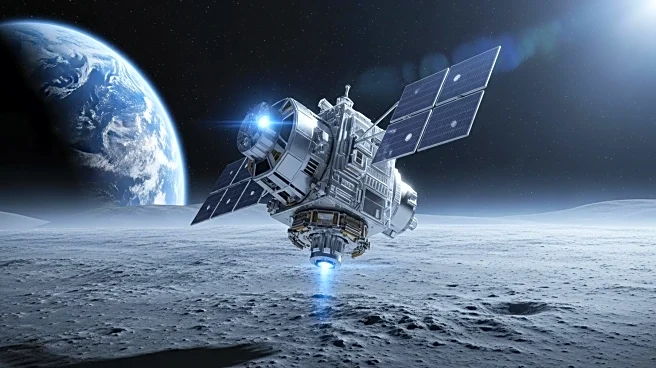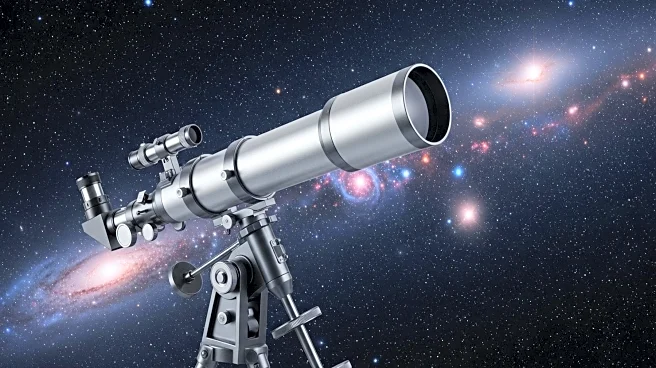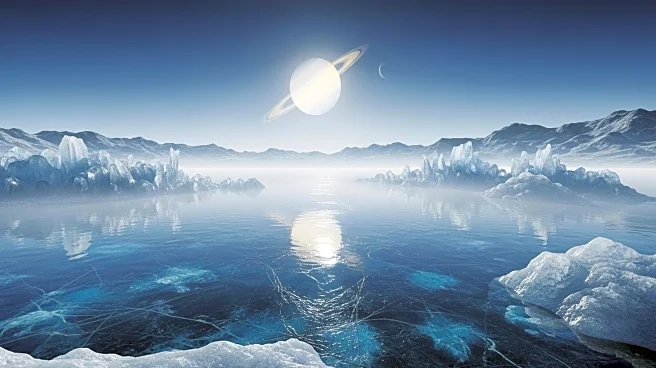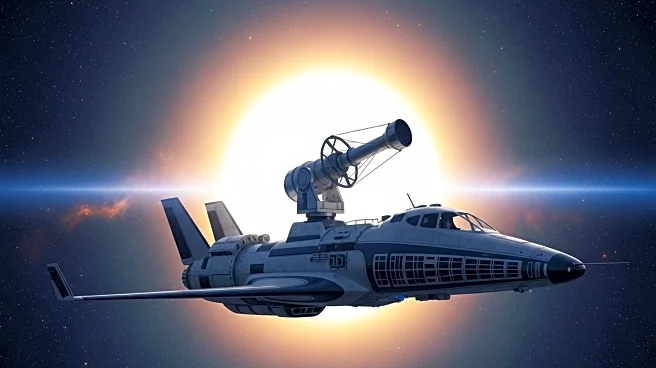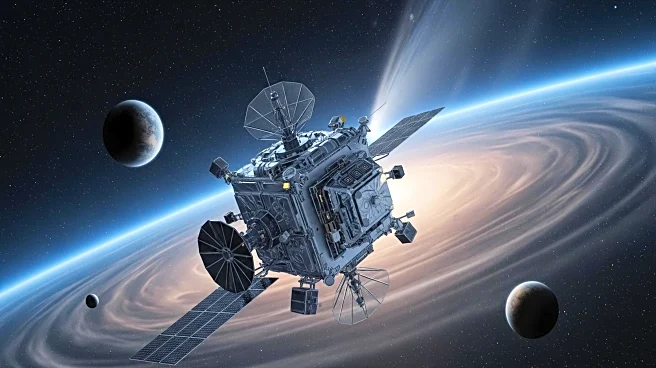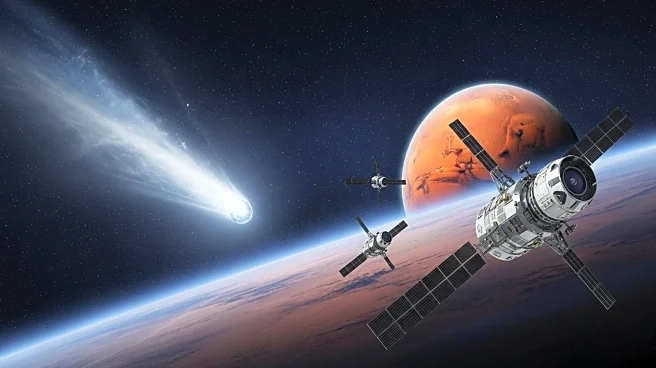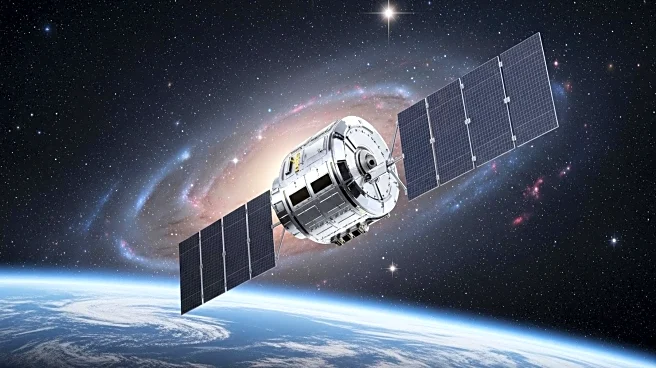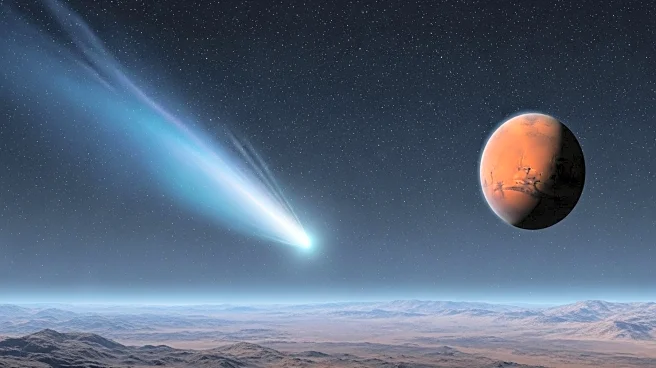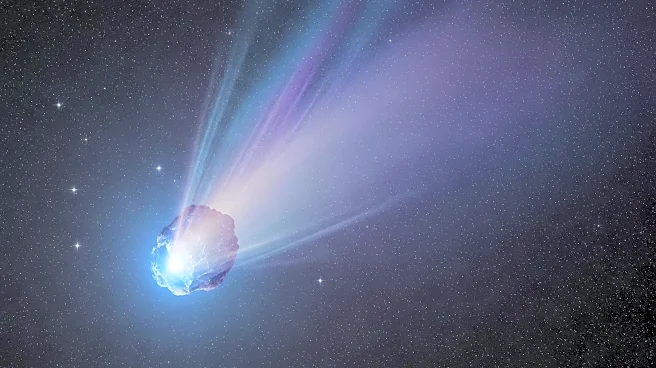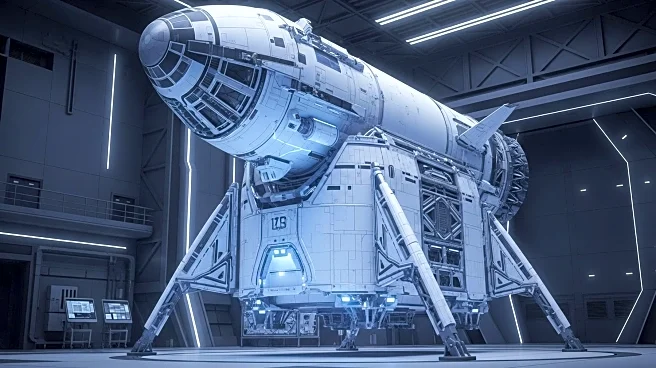What's Happening?
Digital artist Ashley Zelinskie has unveiled the second part of her exhibit series, 'Unfolding the Universe: Wandering Through Time and Space,' at the Torch Gallery in Amsterdam. This exhibit celebrates the James Webb Space Telescope (JWST) through various artistic interpretations, including sculptures and textiles inspired by the telescope's imagery. The exhibit features pieces like the 'Pillars of Creation' and the 'Cat's Paw Nebula,' alongside a virtual reality experience developed in collaboration with the European Space Agency (ESA). Zelinskie has been working with scientists and astrophysicists since 2016 to create space-themed artwork, aiming to make the cosmos more accessible to the public.
Why It's Important?
The exhibit highlights the intersection of art and science, showcasing how scientific achievements like the JWST can inspire creative expression. By collaborating with space agencies such as NASA and ESA, Zelinskie's work underscores the importance of international cooperation in space exploration. The exhibit not only celebrates the technological advancements of the JWST but also invites the public to engage with the wonders of the universe through art. This approach can foster a greater appreciation for scientific endeavors and encourage public interest in space exploration.
What's Next?
The third part of the exhibit series will focus on the Canadian Space Agency's contributions to the JWST mission. Zelinskie plans to continue her exploration of space-themed art with new sculptures and a virtual reality experience that highlights Canada's role in the telescope's success. She is currently seeking a Canadian gallery to host this upcoming chapter, which will further emphasize the collaborative nature of the JWST project and its global impact.
Beyond the Headlines
Zelinskie's work raises questions about the role of art in interpreting and communicating scientific data. By transforming complex astronomical data into tangible art forms, she bridges the gap between science and the public, making space exploration more relatable. This approach not only enriches the cultural landscape but also highlights the potential for art to contribute to scientific discourse.

